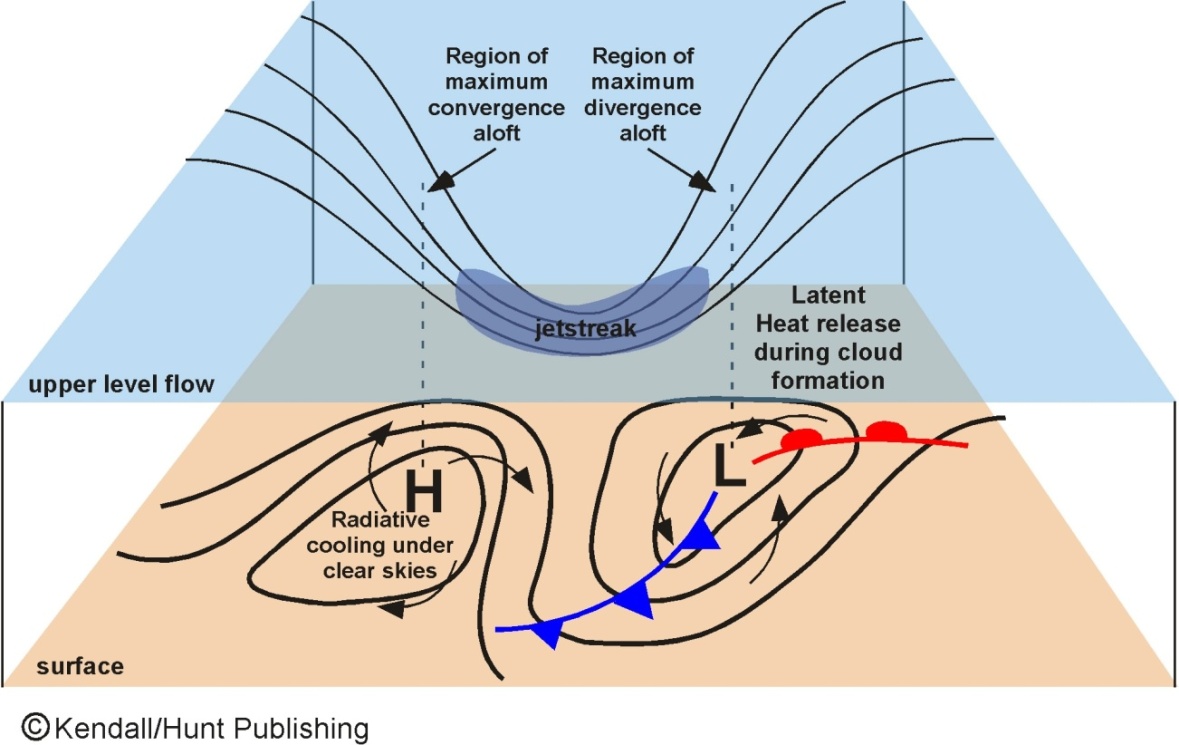
ESS227
Prof. Jin-Yi Yu
Developments of Low- and High-Pressure
Centers

Dynamic Effects: Combined
curvature and jetstreak effects produce upper-level convergence on the
west side of the trough to the north of the jetsreak, which add air mass into
the vertical air column and tend to produce a surface high-pressure
center. The same combined effects produce a
upper-level divergence on the east side of the trough and
favors the formation of a low-level low-pressure center.
Frictional Effect: Surface friction
will cause convergence into the surface low-pressure center after it is
produced by upper-level dynamic effects, which adds air mass into the low center to fill
and weaken the low center (increase the pressure)
Low Pressure: The evolution of
a low center depends on the relative strengths of the upper-level development
and low-level friction damping.
High Pressure: The development
of a high center is controlled more by the convergence of surface cooling
than by the upper-level dynamic effects. Surface friction again tends to destroy the
surface high center.
Thermodynamic
Effect: heating è surface low pressure; cooling è surface high
pressure.